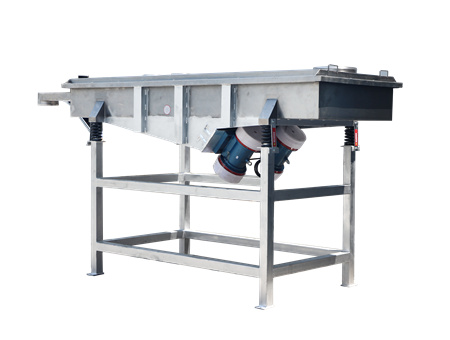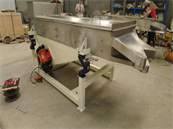Why do we choose a
linear vibrating screen for grain screening?
Grain vibrating screen is a screening equipment produced by people to remove impurities contained in grain, or a sieve used for seed selection. In the grain industry, people usually use linear vibrating screens. Because the linear vibrating screen is the screening equipment with the highest screening efficiency among all screening equipment, and the size of the screening component can be automatically adjusted, it is the preferred choice for grain screening.

According to the characteristics of screened grain materials, such as moisture content, viscosity, specific gravity, particle size, hourly processing capacity requirements, screening grade, mesh size, etc., linear vibration screening types can be selected. Single layer and multi-layer linear vibration screens can reach up to five layers.
Grain linear vibrating screens are widely used:
Linear vibrating screen is widely used in the grain industry. For example, it is used to remove impurities, grade and screen grains such as rice, soybeans, mung beans, peanuts, rapeseed, etc., remove stems, dust, weeds, and grade the size of materials. The processing capacity can reach more than 20 tons per hour, especially for grain depots, flour processing plants, etc. It has the characteristics of large output, strong excitation force, high screening accuracy (up to 98% for the grain industry), simple operation, and convenient maintenance. This series of screening machines can also be applied in industries such as chemical, plastic, abrasive, pharmaceutical, building materials, carbon, fertilizer, etc.

Product structure of grain linear vibrating screen:
The grain linear vibrating screen is composed of a support frame, shock absorption spring, screen frame, screen plate, horizontal vibrating motor, and dust cover. Its working principle is that there is a vibration motor providing the power source, and the two motor shafts have an inclination angle relative to the screen surface. Under the combined force of excitation force and material self gravity, the material is thrown up on the screen surface and moves forward in a straight line, achieving the purpose of screening and grading the material. The mesh size can reach up to 400 mesh, sieving out 7 different particle sizes of materials.




